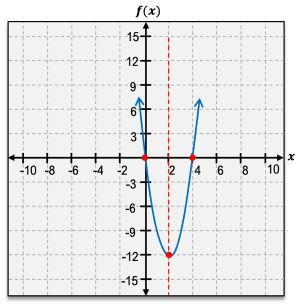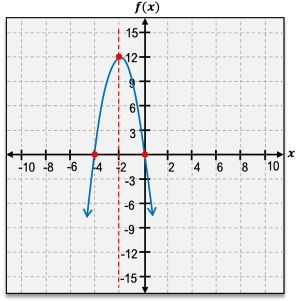Quadratic functions are a specific type of polynomial function characterized by their degree of 2. The standard form of a quadratic function is expressed as \( f(x) = ax^2 + bx + c \), where \( a \), \( b \), and \( c \) are real numbers, and \( a \) cannot be zero. The graph of any quadratic function takes the shape of a parabola, which can open either upward or downward depending on the sign of \( a \).
The vertex of a parabola is a crucial feature, representing either the highest or lowest point on the graph. If the parabola opens upward, the vertex is a minimum point; if it opens downward, the vertex is a maximum point. The vertex is denoted as an ordered pair, such as \( (h, k) \), where \( h \) and \( k \) are the x and y coordinates, respectively.
Another important aspect of quadratic functions is the x-intercepts, which are the points where the graph crosses the x-axis. A quadratic function can have either one or two x-intercepts, but never more. The y-intercept, on the other hand, is where the graph intersects the y-axis, and it can be found by evaluating \( f(0) \).
The axis of symmetry is a vertical line that divides the parabola into two mirror-image halves, always passing through the vertex. It can be expressed as \( x = h \), where \( h \) is the x-coordinate of the vertex.
When analyzing the domain and range of quadratic functions, the domain is always all real numbers, represented as \( (-\infty, \infty) \). The range, however, depends on whether the vertex is a minimum or maximum. For a minimum vertex, the range extends from the vertex's y-coordinate to infinity, while for a maximum vertex, it extends from negative infinity to the vertex's y-coordinate.
Additionally, understanding the intervals of increase and decrease is essential. A parabola increases on the interval from negative infinity to the vertex and decreases from the vertex to positive infinity. This behavior is determined by the vertex's position on the graph.
Quadratic functions can also be expressed in vertex form, which is particularly useful for graphing. The vertex form is given by \( f(x) = a(x - h)^2 + k \), where \( (h, k) \) is the vertex of the parabola. This form allows for easier identification of the vertex and the direction in which the parabola opens.













